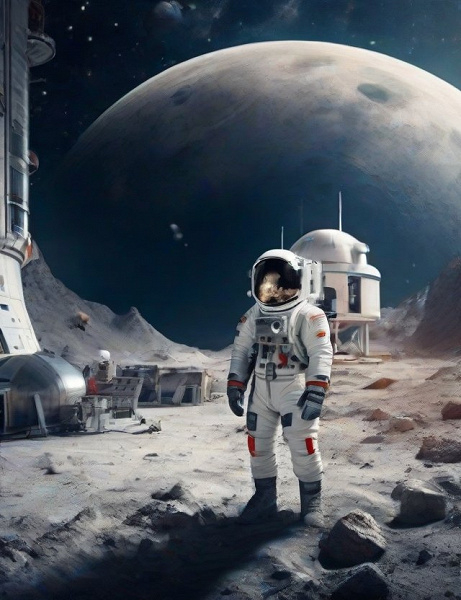Study points to need for careful monitoring of astronauts' reproductive health upon return to Earth
With the upcoming flight of the Orion capsule to the Moon as part of the Artemis II mission in 2024, a new era of manned flight begins. This mission will take astronauts to lunar orbit, paving the way for the Artemis III mission planned for December 2025. Artemis III will record the first human presence on the lunar surface since 1972, with astronauts spending seven days near the moon's south pole. Subsequent Artemis missions will open up the possibility of even longer stays in space.
To ensure that humanity is prepared for long-term stays in space, including possible trips to Mars, scientists are actively researching the impact of the space environment on human health. Aspects being investigated include the effects of increased levels of cosmic radiation associated with energetic particles, supernovae and microgravity on reproductive health.
Recent research supported by NASA shows that increased levels of cosmic radiation and microgravity can affect the functioning of vascular tissue. This can lead to erectile dysfunction, which may persist after astronauts return to Earth and undergo an extended recovery period.
Such studies point to the need to carefully monitor the health of astronauts after returning to Earth for planned manned missions, said Justin La Favor, study co-author from the University of Florida.
On Earth, people are protected from high-energy charged particles by the planet's magnetosphere. Astronauts on the ISS are protected, although they still receive the same amount of radiation in a week as people on Earth do in a year. However, when astronauts are on the Moon and Mars, they will be much less protected from particles.
“Although erectile dysfunction affects more than half of men over 40 and is an important factor in life satisfaction, the effects of spaceflight on erectile function remain unclear,” the team wrote about the study.
They studied 86 adult male Fisher-344 rats. The rats were first exposed to simulated microgravity and cosmic rays in groups at the Space Science Laboratory (SSL) at Berkeley. Then, after analyzing rat tissue a year later, Favor and his colleagues found that even short-term exposure to cosmic rays led to an increase in oxidative stress.
Oxidative stress can negatively affect the body's cells, proteins and DNA, exacerbating and accelerating the effects of aging and contributing to various diseases such as diabetes, cancer and neurodegenerative diseases such as Alzheimer's disease. In addition, oxidative stress can contribute to erectile dysfunction and impair the function of the arteries that supply blood to tissues.
To combat oxidative stress, the human body produces antioxidants. The study found that although cosmic radiation may have long-term negative effects, improvements in tissue function caused by targeted effects on the reduction-oxidation and nitric oxide reactions may be a sign that erectile dysfunction is treatable.
Further development and use of antioxidants may be a promising approach to improve the health of astronauts in the context of long-duration space missions and represent an important step in ensuring favorable conditions for living in space.

